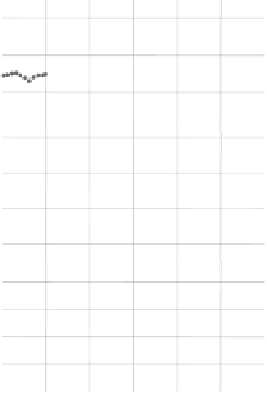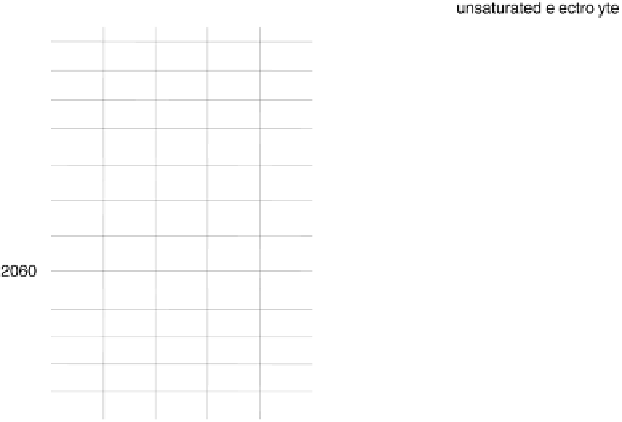Environmental Engineering Reference
In-Depth Information
1
p
)R23.48213CO phase transition
on a Pt(111) electrode in a CO-saturated 0.1 M H
2
SO
4
electrolyte, observed via SFG of atop CO.
The frequency shift data in (b) and (e) indicate that a new potential is established on the electrode
within 0.2 s. The forward transformation is much slower than the reverse. There are minimal
differences between the first and second cycles, indicating minimal change in electrolyte com-
position during kinetic measurements.
p
19
Figure 12.12
Kinetics of the (2
2)23CO
!
(
signal results from the coverage change and also from the changing [1
þ
a
av
U(0)] and
[1
þ
a
e
U(0)] terms in (12.2). It can be shown that IRAS measurements depend on the
[1
þ
a
av
U(0)] term alone, and SHG on the [1
þ
a
e
U(0)] term alone. Thus, it should be
possible to determine these terms independently using IRAS and SHG measurements
and correct the SFG measurements to extract the changing surface coverage in a quan-
titative manner. We derived [Lagutchev et al., 2006] a useful relation for a transform-
ation between phases I and II, which might involve an electrochemical transformation,
a phase transformation, a change in adsorbed ions, etc.:
2
=
3
C
II
¼
I
SFG
(phase I)
C
I
I
IRAS
(phase II)
I
IRAS
(phase I)
I
SHG
(phase II)
I
SHG
(phase I)
(12
:
6)
I
SFG
(phase II)
where c is the coverage from (12.3). Using (12.6) greatly improves the quantitative
accuracy of SFG surface coverage measurements. We used literature measurements
of SHG [Akemann et al., 1998, 2000; Pozniak et al., 2001; Pozniak and Scherson,
2003] and IRAS [Villegas and Weaver, 1994; Kitamura et al., 1989; Yoshimi et al.,
1996] intensities. Thus, this phase transition [Dederichs et al., 2000; Villegas and
Weaver, 1994; Tolmachev et al., 2004; Wang et al., 2005; Lucas et al., 1999;
Akemann et al., 1998, 2000; Pozniak et al., 2001; Pozniak and Scherson, 2003;
Kitamura et al., 1989; Yoshimi et al., 1996] is a critical test of SFG as a quantitative
















































































Search WWH ::

Custom Search